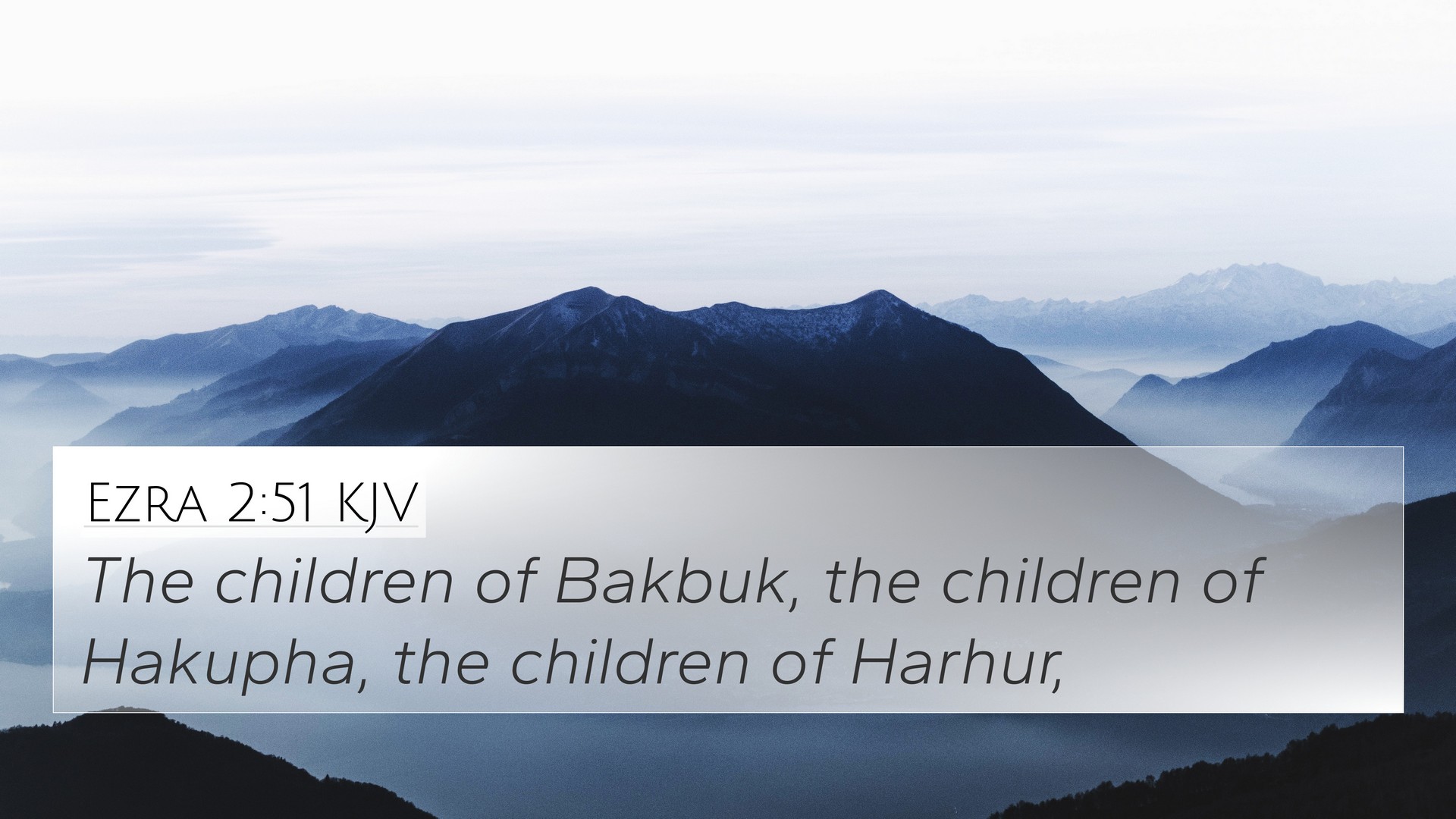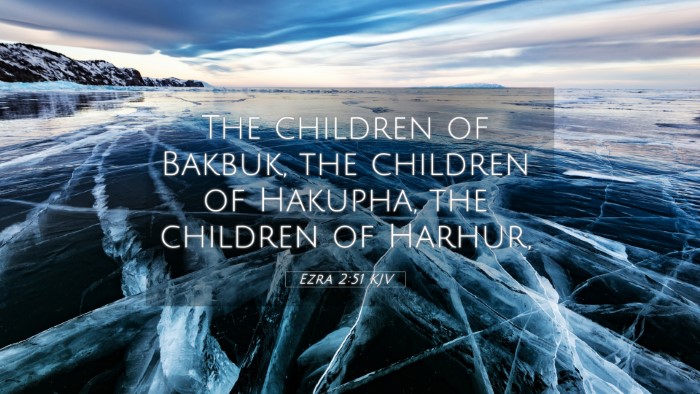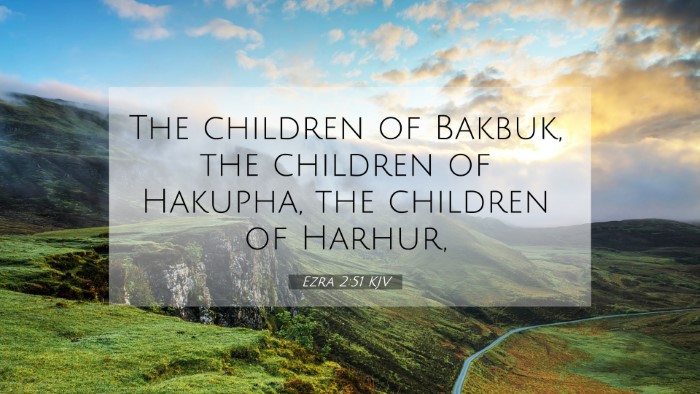Understanding Ezra 2:51
Ezra 2:51 contains a list of the families that returned from Babylonian captivity, specifically mentioning the children of the priests, the children of the sons of Zaddok. This verse is part of a broader narrative documenting the restoration of Israel after exile and emphasizing the importance of the priestly lineage in maintaining the worship and practices of the Israelite community.
Summary of Insights
The commentary on Ezra 2:51 offers rich insights about the significance of the priests' lineage and their role in Israel's spiritual life. Here are key interpretations based on public domain commentaries:
- Matthew Henry: Henry discusses the importance of the priesthood, emphasizing the faithfulness of these families in maintaining the sacred duty of worship. He notes that their return signifies God's favor and the restoration of proper worship.
- Albert Barnes: Barnes highlights the specific names mentioned, focusing on the heritage of Zaddok, which roots back to King David's time. He explains how the priests served as mediators between God and the people, and their return was crucial for restoring temple services.
- Adam Clarke: Clarke elaborates on the theological implications of the priests’ return, stressing that the continuation of Aaron's lineage was pivotal for fulfilling God's covenant with Israel. He points out that this highlights God's faithfulness to His promises during their captivity.
Connections to Other Bible Verses
Ezra 2:51 can be cross-referenced with several other scriptures to provide deeper theological insights and historical context. Here are some relevant connections:
- 1 Chronicles 6:4-15: A genealogical record that overlaps with the families returned, reaffirming their priestly lineage.
- Jeremiah 30:18: A prophetic promise of restoration that highlights God’s intention to bring back His people and re-establish worship.
- Ezekiel 44:15: Discusses the future responsibilities of the priests, connecting Ezekiel's vision with the historical return of the priestly families.
- Nehemiah 7:39-42: A parallel list of families that returned alongside Ezra, reinforcing communal identity.
- Exodus 28:1: God's intention for the priesthood is grounded in the patterns established in the law, underscoring their significance in worship.
- Luke 1:5-6: References the priestly lineage of Zechariah, echoing the importance of priestly heritage in the New Testament era.
- Hebrews 7:14: Discusses the significance of Jesus' priesthood in relation to the Levitical priesthood, weaving connections between the Old and New Testaments.
Thematic Connections
The theme of restoration is central to Ezra 2:51, resonating with numerous other Biblical passages that speak of redemption and renewal:
- Isaiah 11:11: A prophecy of gathering the remnant of Israel, similar to how the returned families were part of the restoration process.
- Joel 2:25: God's promise of restoration after judgment, fitting into the larger narrative of Israel's return to their homeland from captivity.
Cross-Referencing Biblical Texts
In studying Ezra 2:51, the tools for Bible cross-referencing become essential. Below are some methods that can be utilized for deeper exploration:
- Bible Concordance: A resource that allows for searching terms and phrases to discover related verses.
- Bible Cross-Reference Guide: Tools that provide a guide for finding thematic links across different scripture passages.
- Cross-Reference Bible Study: A method that emphasizes exploring verses in relation to one another to uncover deeper meanings.
- Inter-Biblical Dialogue: Engaging with texts across the Old and New Testaments to understand covenant theology and divine promises.
Conclusion
Ezra 2:51 serves as a pivotal verse in understanding the restoration of the Israelite community and the significance of the priestly lineage. Through careful cross-referencing and thematic analysis, one can appreciate the broader narrative of redemption that unfolds throughout the Scriptures, establishing a rich tapestry of God's faithfulness.


